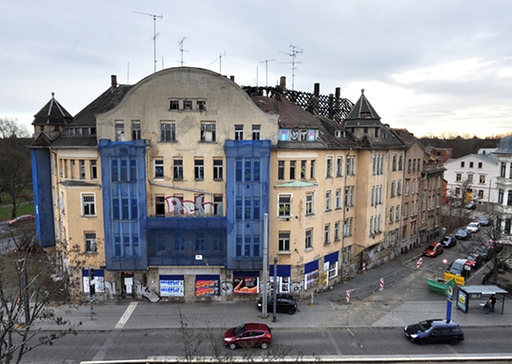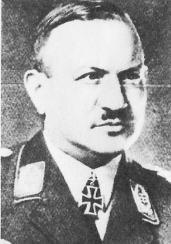Bowman, Raymond “Robert” J, was born in Rochester, New York  on 02-04-1924, the fifth of seven children, four girls and three boys, to George and Florence Rebecca (born Ward) Bowman. In 1931 when Ray was only 7 years old, his father died of Tuberculosis. The family struggled after his death. Besides receiving welfare checks, Ray’s mother took jobs cleaning people’s homes and the three oldest children, Marguerite (age 18), Martin (age 16), and Doris (age 14) brought in money from their full‐time jobs. The remaining children, Mildred (12), Ray (7), Ruth (5), and William (born 5 days after father’s death), were at school or at home. After graduating high school, Bowman was drafted into the United States Army
on 02-04-1924, the fifth of seven children, four girls and three boys, to George and Florence Rebecca (born Ward) Bowman. In 1931 when Ray was only 7 years old, his father died of Tuberculosis. The family struggled after his death. Besides receiving welfare checks, Ray’s mother took jobs cleaning people’s homes and the three oldest children, Marguerite (age 18), Martin (age 16), and Doris (age 14) brought in money from their full‐time jobs. The remaining children, Mildred (12), Ray (7), Ruth (5), and William (born 5 days after father’s death), were at school or at home. After graduating high school, Bowman was drafted into the United States Army  on 21-06-1943; Bowman was unmarried, and had no children. He was assigned to Company D of the 23rd Infantry Regiment, nickname “Tomahawks”
on 21-06-1943; Bowman was unmarried, and had no children. He was assigned to Company D of the 23rd Infantry Regiment, nickname “Tomahawks” ![]() of the 2nd Infantry Division, nickname “Indianhead”
of the 2nd Infantry Division, nickname “Indianhead” under command og Major General Paul Wilkens Kendall,
under command og Major General Paul Wilkens Kendall, 
 on 05-07-1943, where he later qualified as a machine gunner. General Kendall died 03-10-1983, aged 85, Palo Alto, California. The 2nd Division had total battle casualties: 16,795, killed in action: 3,031, wounded in action: 12,785, missing in action: 193 and prisoner of war: 786.
on 05-07-1943, where he later qualified as a machine gunner. General Kendall died 03-10-1983, aged 85, Palo Alto, California. The 2nd Division had total battle casualties: 16,795, killed in action: 3,031, wounded in action: 12,785, missing in action: 193 and prisoner of war: 786.
In January 1944, Bowman was sent overseas to the United Kingdom in preparation for Operation Overlord  .On June 6, 1944, tens of thousands of soldiers storm the French coast near Normandy: D-Day, the beginning of the end of the Second World War. It is mainly Americans, British and Canadians who play a leading role, but the invasion is also important for my country: Dutch soldiers play a supporting role and for many residents the long-awaited liberation begins with D-Day. To this day, the invasion still appeals to the imagination. “They threw bombs as if they were gingerbread nuts.”
.On June 6, 1944, tens of thousands of soldiers storm the French coast near Normandy: D-Day, the beginning of the end of the Second World War. It is mainly Americans, British and Canadians who play a leading role, but the invasion is also important for my country: Dutch soldiers play a supporting role and for many residents the long-awaited liberation begins with D-Day. To this day, the invasion still appeals to the imagination. “They threw bombs as if they were gingerbread nuts.”
Bowman served in France, where he was wounded in action on 03-08-1944, and later in Belgium and Germany. He reached the rank of Private first class  during his service.
during his service.
Death and burial ground of Bowman, Raymond “Robert” J.
 Raymond in 1942 at his home. On 18-04-1945 in Leipzig, Germany, while Bowman
Raymond in 1942 at his home. On 18-04-1945 in Leipzig, Germany, while Bowman  and other troops were fighting to secure a bridge from a position inside an apartment building, Soldiers Bowman and Lehman Riggs of Cookeville, Tennessee, took positions in an open balcony with a clear view of the bridge. One fired the gun, while the other soldier fed it. Riggs came inside, leaving Bowman alone firing the gun. Bowman was shot and killed by a German sniper bullet, in the cheek which came from the street below. He crumpled to the floor, already dead, while reloading his machine gun. Nearby photographer Robert Capa
and other troops were fighting to secure a bridge from a position inside an apartment building, Soldiers Bowman and Lehman Riggs of Cookeville, Tennessee, took positions in an open balcony with a clear view of the bridge. One fired the gun, while the other soldier fed it. Riggs came inside, leaving Bowman alone firing the gun. Bowman was shot and killed by a German sniper bullet, in the cheek which came from the street below. He crumpled to the floor, already dead, while reloading his machine gun. Nearby photographer Robert Capa

 captured images of the fight, Bowman’s death, and the immediate aftermath, which gained fame in Life magazine with the caption “The picture of the last man to die.” The Life magazine article did not identify the soldiers in the photographs by name, although Bowman’s family recognized him by the small pin (which bore his initials) that he always wore on his collar. War photographer Robert Capa climbed through the balcony window to the flat and he took a picture of the dead soldier, who lay in the open door with the Luftwaffe sheepskin helmet he had looted still on his head. He took other pictures showing how the blood spread on the floor, while other soldiers attended to Bowman and to his fellow gunner
captured images of the fight, Bowman’s death, and the immediate aftermath, which gained fame in Life magazine with the caption “The picture of the last man to die.” The Life magazine article did not identify the soldiers in the photographs by name, although Bowman’s family recognized him by the small pin (which bore his initials) that he always wore on his collar. War photographer Robert Capa climbed through the balcony window to the flat and he took a picture of the dead soldier, who lay in the open door with the Luftwaffe sheepskin helmet he had looted still on his head. He took other pictures showing how the blood spread on the floor, while other soldiers attended to Bowman and to his fellow gunner

 The apartment’s current owner, Katrin Stein, said she tried not to think too much about what had happened there. Bowman received many honors for his service, including the Bronze Star Medal, an Army Good Conduct Medal, and two Purple Hearts.
The apartment’s current owner, Katrin Stein, said she tried not to think too much about what had happened there. Bowman received many honors for his service, including the Bronze Star Medal, an Army Good Conduct Medal, and two Purple Hearts. The photographs were published in Life magazine on 14-05-1945, shortly after Germany surrendered, with the caption The Picture of the Last Man to Die, which became the official title. They became some of the most iconic images of World War II. Two years later, Capa said in an interview that “It was a very clean, somehow very beautiful death and I think that’s what I remember most from the war”.
Lehman Riggs worked for the post office after the war. As the oldest member of the Veterans Honor Guard, 
 Riggs participated in ceremonies at more than 1,000 funerals and played taps for the deceased soldiers.Lehman Riggs returned to Leipzig in 2012 and again in 2016 at age 96 to attend the dedication ceremony. Riggs
Riggs participated in ceremonies at more than 1,000 funerals and played taps for the deceased soldiers.Lehman Riggs returned to Leipzig in 2012 and again in 2016 at age 96 to attend the dedication ceremony. Riggs  died 19-08-2020, in Cookeville, Tennessee, at the age of 101.
died 19-08-2020, in Cookeville, Tennessee, at the age of 101.
In July 2015, the city of Leipzig, Germany voted to name the street (previously called Jahnallee 61) in front of the apartment building where Bowman was killed “Bowmanstraße” after him.

 US veteran Lehman Riggs holds a street sign with the name of his fallen comrade Bowman. The renaming took place on 17-04-2016. The apartment building now contains a small memorial with Capa’s photographs and information about Bowman.
US veteran Lehman Riggs holds a street sign with the name of his fallen comrade Bowman. The renaming took place on 17-04-2016. The apartment building now contains a small memorial with Capa’s photographs and information about Bowman.

Capa’s pictures recorded the aftermath in graphic detail. Although the magazine did not identify the soldiers by name, his family back in Rochester recognized Raymond right away. “He had a pin on his lapel with his initials that he had made in high school. There was no doubt it was him,” said his sister-in-law, Kathleen Bowman, in a 2012 interview. 
Raymond J. Bowman first was buried on the American War Cemetery in Frankfurt am Main, but in 1948 he was reburied in the USA. Raymond “Robert” J Bowman is buried on Holy Sepulchre Cemetery, Rochester, Monroe County, New York, USA.
The building where Bowman was killed had fallen into disrepair until a local preservation effort was launched in 2012. Now known as Capa Haus  , the renovated building will include an exhibition space to commemorate Capa’s photos of that fateful day, and a plaque
, the renovated building will include an exhibition space to commemorate Capa’s photos of that fateful day, and a plaque  to honor Bowman and his fellow soldiers.
to honor Bowman and his fellow soldiers.























Leave a Reply